Orthodontic Treatment
Orthodontic treatment is needed to correct improperly positioned teeth and jaws. If the teeth are crooked there are more chances of decay and gum disease. If the jaws are not properly aligned it can cause temporomandibular joint disorders.
Orthodontic appliances can be both fixed and removable. They exert pressure on teeth and jaws to align them in proper position using braces and brackets (metal brackets, ceramic brackets, lingual brackets). The orthodontic approach depends on the kind of problem.
Orthodontic treatment needs minimum of 8-10 months to align the teeth.
Metal Brackets
Metal Braces are the most common type of braces and are more comfortable today than even before. Made of high grade stainless steel, metal braces straighten your teeth using metal brackets and archwires. With metal braces, you have the option of adding colored elastics (ligature rings) for a more unique and colorful smile.
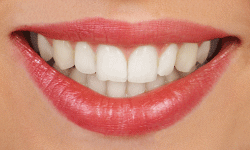
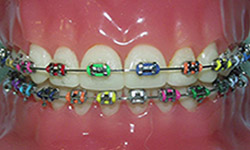
Ceramic Brackets
Have you been thinking about getting braces but are concerned with the appearance that traditional metal braces offer? Perhaps you should consider clear / ceramic braces. For this reason, ceramic braces are used mainly on older teenagers and adult patients who have cosmetic concerns.
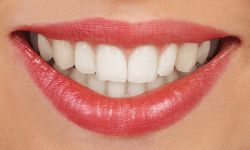
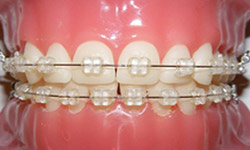
Lingual Brackets
Lingual braces work in much the same way as their traditional counterparts. However there´ s one important cosmetic difference; the lact of the usual metal supports on the front of your teeth. The key difference with Lingual braces is that they can be placed on the rear of your teeth, hiding the majority of the metal parts.
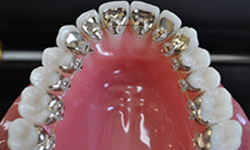
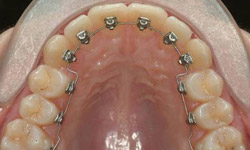
Gold Brackets
Discover a new element in orthodontics... GOLD ! The classic beauty and elegance of gold is now available in orthodontic braces. They are made of stainless steel but are uniquely coated in gold.

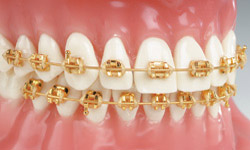
Determinic The Treatment Need
You need to consult an orthodontist if there is :
- Crowded or misplaced teeth.
- Sucking the thumb or fingers or other oral habits.
- Speech difficulty.
- Protruding teeth.
- Facial asymmetry.
- Inability to close lips.
- Front teeth that do not meet.
Procedure
- At first, an assessment of patient ´ s teeth is made by using X-ray and making plaster models.
- The orthodontist then decides the need for either removable, or functional or fixed appliance.
- In some cases, it might be necessary to remove a tooth to correct the position of other teeth.
- Retainers are often used near the end of orthodontic treatment. They hold newly fixed teeth in place while the adjacent gums and bone adjust to new position of teeth.
Tooth Straightening
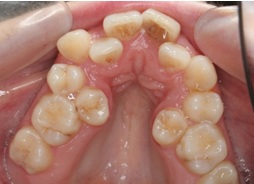
Many people are born with crooked teeth. In some cases, perfectly straight teeth can become crooked with age, as the structure of your mouth changes, or due to tooth loss and movement of the remaining teeth.
Teeth straightening can be achieved by a variety of different cosmetic dental techniques. Not everyone needs to have fixed wire braces or wear unsightly headgear for a perfectly aligned smile.
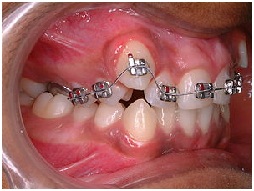
Fixed Orthodontic Braces: Orthodontic braces are the traditional way that teeth are straightened and are typically associated with young children. Metal wires are attached to the front surfaces of your teeth with brackets. These brackets and wires are progressively tightened over time, applying gentle pressure to the teeth and encouraging them to move into a straighter position. The time taken depends upon how much movement of your teeth is required, and your orthodontist or dentist will be able to advise you following an initial examination.
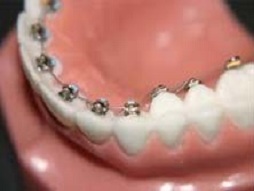
Lingual braces: Lingual braces are similar to standard wire braces but they are fitted to the inside (back) surfaces of your teeth and so are not visible from the front. They can be quite uncomfortable and difficult to get accustomed to but provide a perfect solution to straightening your teeth without anyone noticing. Unlike invisible braces, they can even be used to correct severe orthodontic cases.
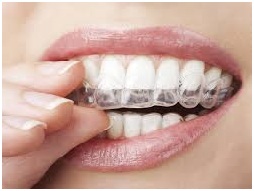
Invisalign: Invisalign takes a modern approach to straightening teeth, using a custom-made series of aligners created for you and only you. These aligner trays are made of smooth, comfortable and virtually invisible plastic that you wear over your teeth. Wearing the aligners will gradually and gently shift your teeth into place, based on the exact movements your dentist or orthodontist plans out for you. There are no metal brackets to attach and no wires to tighten.

Inman Aligner: The Inman Aligner is a cross between the invisible braces system and a metal braces system, as it is not as "invisible" as Invisalign (since it has metal components) but it relies on a removable aligner that moves the teeth by applying force to them over time. The Inman Aligner is often quicker than Invisalign, only one appliance is required for the entire treatment, and it is more affordable.
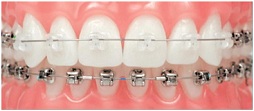
Damon Braces: Damon Braces are a "friction-free" alternative to conventional treatment with braces. The do not have any elastic ties and so cause less irritation, are more comfortable and provide faster tooth-straightening results than treatment with conventional braces.
